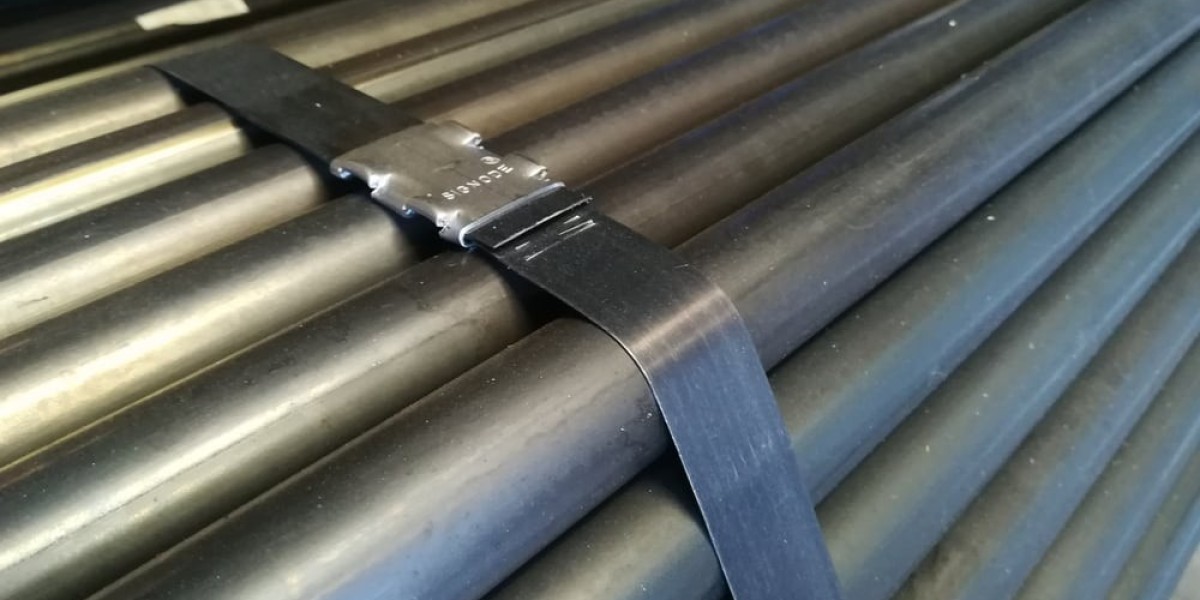In today’s fast-paced world, businesses rely heavily on efficient shipping and storage methods. One tool that plays a key role in keeping products secure during transit is steel strapping. But what exactly is it? How can it ensure your pallets stay intact throughout their journey? In this article, we’ll explore the ins and outs of steel strapping for pallet containment, guiding you step by step on how to do it right.
What is Steel Strapping?
Steel strapping is a method of securing products on a pallet using high-tensile steel bands. It is commonly used in industries where products such as construction materials, heavy machinery, and large equipment need to be tightly secured during transportation.
Think of steel strapping like a belt for your pallets. Just as a belt keeps your pants securely, steel strapping ensures that your items stay firmly on the pallet, preventing movement or shifting during transit.
Why Use Steel Strapping for Pallets?
Why is steel strapping preferred over other methods? Steel strapping offers superior strength, durability, and reliability compared to other materials like plastic or nylon. It’s capable of handling heavy loads and resisting harsh environmental conditions. This makes it the go-to choice for heavy-duty shipping tasks.
Have you ever had a package arrive damaged because it wasn’t properly secured? Steel strapping prevents that by creating a tight, strong hold that ensures nothing slips out of place.
Tools and Materials You’ll Need
Before you get started, gather the following tools and materials for a smooth strapping process:
Steel Straps (appropriate for the load)
Strapping Tensioner Tool
Strapping Sealer or Crimper
Metal Seals
Protective Gloves
Cutter (for trimming excess strapping)
Having the right tools will make the job easier and more efficient.
Step 1: Prepare Your Pallet
Preparation is key. First, ensure that your pallet is in good condition. The wood should be sturdy and free of cracks or breaks. Once your pallet is checked, load the items you want to transport evenly across the surface. Ensure the load is balanced to avoid tipping or instability during shipping.
Step 2: Selecting the Right Strapping
Choosing the right type of steel strapping is crucial for safety and effectiveness. The width and thickness of the strapping should be based on the weight and size of the load. For heavier loads, wider and thicker steel straps are required. Check the weight rating of the strapping material before using it.
Step 3: Applying the Strapping
Place the steel strap under the pallet and wrap it around the entire load to begin the strapping process. This step might remind you of tying a gift box, except in this case, it’s all about holding the items together securely!
Ensure the strapping runs evenly around the load without twists or knots.
Step 4: Sealing the Strapping
Next comes the crucial part: sealing the strapping. Using a strapping sealer or crimper, place a metal seal over the overlapped sections of the steel strap. Then, crimp the seal to create a secure bond. This will ensure that the strapping stays in place even under pressure.
Step 5: Tightening the Straps
Once the strapping is sealed, it’s time to tighten it. Use a strapping tensioner tool to pull the strapping tight. Be sure to apply enough tension to keep the load secure but not so much that the strapping becomes overstressed and prone to snapping. It’s all about finding that perfect balance.
Step 6: Securing the Load
With the straps now in place, cut off any excess steel using a cutter tool. Ensure the straps' ends are tucked safely out of the way to prevent injury. Double-check that everything is secure before moving on to transportation.
Common Mistakes to Avoid
Over-tensioning: Pulling the straps too tight can cause them to snap.
Using the wrong tools: Ensure you use a crimper and tensioner designed for steel strapping.
Skipping the sealing step: Without a proper seal, the strapping could loosen during transit.
Benefits of Steel Strapping
Steel strapping offers a variety of advantages:
Strength: It can withstand high tension and is ideal for heavy loads.
Durability: Resistant to harsh environmental conditions like heat and moisture.
Security: Keeps your palletized load in place throughout its journey.
These features make steel strapping a reliable option for businesses needing secure packaging solutions.
How to Ensure Pallet Safety?
Ensuring the safety of your palletized load requires a combination of the right materials and techniques. Always double-check that the strapping is tight, sealed, and evenly applied. Also, a quality pallet should be used, and the weight should be distributed evenly to prevent accidents.
Comparison: Steel vs Plastic Strapping
Steel Strapping:
Best for heavy-duty loads
Resistant to sharp objects and high-impact
Can handle extreme environmental conditions
Plastic Strapping:
Lightweight and easy to handle
Suitable for lighter loads
Less expensive but less durable than steel
Both types have their uses, but steel strapping remains unmatched for heavy-duty tasks.
Conclusion
Steel strapping is a simple yet powerful method for securing palletized loads during shipping. By following these steps, you can ensure your products stay safe and secure, no matter where they’re headed. From choosing the right strapping to properly sealing and tightening it, the process is straightforward and essential for businesses that rely on safe transportation.
FAQs
1. Can I reuse steel strapping?
Steel strapping is designed for one-time use to ensure maximum strength and security.
2. What’s the difference between steel and polyester strapping?
Steel strapping is stronger and better suited for heavy-duty loads, while polyester strapping is lighter and more flexible.
3. How tight should I make the strapping?
The strapping should be tight enough to secure the load but not so tight that it damages the pallet or the items.
4. Is steel strapping weather-resistant?
Steel strapping can withstand harsh weather conditions, including heat, rain, and cold.
5. What are common alternatives to steel strapping?
Common alternatives include plastic strapping, nylon strapping, and polyester strapping. Each has its use, depending on the load size and requirements.









